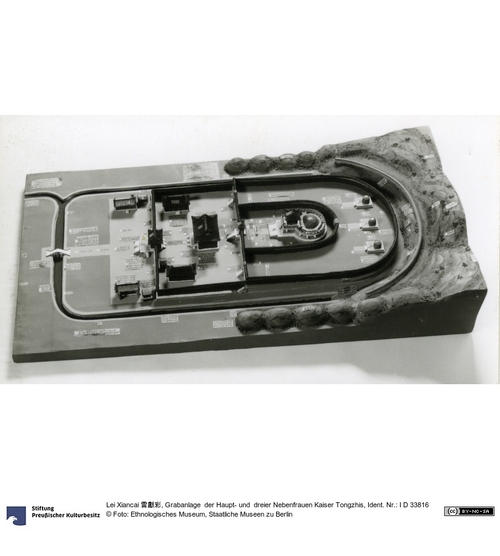Baumodell für das Grab der Hauptfrau Kaiser Tongzhis (1856-1875), Alute (+1875) und dreier Nebenfrauen. Das Originalbauwerk befindet sich in Dongling, ca. 150 nördl. von Beijing.
(Redaktioneller Kurztext nach vorliegender Literatur und Begutachtung durch Prof. Wang Qiheng , Yangshi Lei Architectural Archives Research Institute , Tianjin University, im Mai 2013, in Berlin. Kommentar: Siegmar Nahser).
Angaben zur Entstehung:
Lei Xiancai 雷獻彩 (geb. 1877 - Todesjahr unbekannt), Hersteller
Yangshi Fang 樣式房 (Kaiserliches Design-Amt), Auftraggeber
Tongzhi-Periode, vor 1873
China (Land)
Herstellungsort: Beijing (Peking) 北京
Bezug: gebaut in Dongling (Ort)
en

